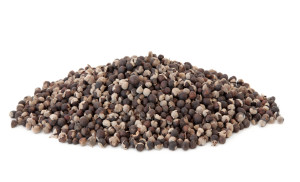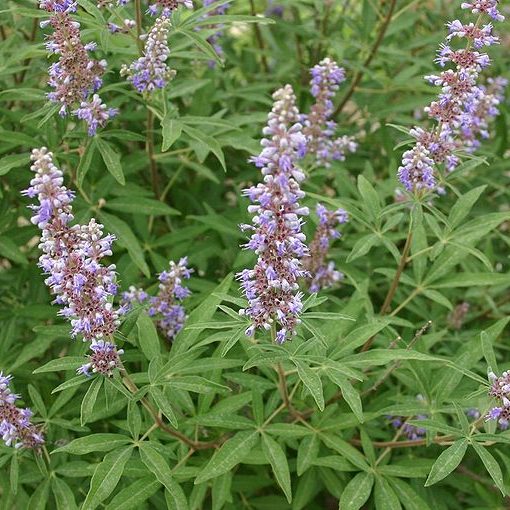
Vitex agnus-castus, also known as Vitex, chasteberry, chaste-tree berry, and/or monk’s pepper, has been used for thousands of years by herbalists, midwives, and natural healthcare practitioners to offer ease for their female clients in dealing with a myriad of hormonal issues, including those that contribute to infertility. As far back as the 1500s, reports from herbalists have read, “the seeds and leaves are good against pain and inflammations of the uterus.”
Vitex supports overall hormone balance by stimulating the pituitary gland. This action and its many uses, is why we feel Vitex is the #1 female fertility herb. Read on to learn more about its applications for use for fertility…
Traditional and Modern Uses For Vitex:
1. Acne
Common/cystic acne thought to be hormonally-induced, or caused by an over-secretion of estrogen (in both young men and women). Studies show the use of Vitex to reduce acne when combined with a clean, whole food diet.
2. Premenstrual Syndrome (PMS)
Clinical studies show relief of the following symptoms especially when they appear at the onset of menstruation.
- emotional upset and depression
- migraine headaches
- skin rashes, acne, allergies
- uterine and abdominal cramps, even muscle spasms
- swelling (edema) of the lower legs (when the legs feel puffy)
3. Menstrual Health
Supporting menstrual health is where Vitex shines. It is traditionally used to regulate the many menstrual cycle anomalies that present themselves, which are often different from what is considered normal, or expected.
- absent period (primary and secondary amenorrhea)
- irregular/unusual menstruation as a result of improper function of the corpus luteum
- painful menstruation (dysmenorrhea)
- menstrual periods that are too close together (polymenorrhea)
- rarely-occurring menstrual period (oligomenorrhea)
- very weak menstrual period (hypomenorrhea)
- very long periods with heavy bleeding (menorrhagia)
- heavy menstrual flow that is consistent cycle to cycle (hypermenorrhea)
- abnormal spotting between periods
- Luteal-Phase Defect
- may help normalize the menstrual cycle, including ovulation, after stopping the use of estrogen-containing birth-control pills
4. Breast function
- milk production – Vitex is used historically to stimulate the amount of breast milk produced and the flow of breast milk after giving birth.
- painful, sensitive breasts with possible swelling as a result of PMS (mastalgia, or mastodynia)
- elevated prolactin levels associated with breast pain in the absence of pregnancy (hyperprolactinemia)
5. Pregnancy
German research shows Vitex may help prevent miscarriage (especially due to low progesterone levels) when used through the end of the third month of pregnancy.
6. Endometriosis
Vitex may help the body to correct irregular menstruation as a result of endometriosis or abnormal growth of the endometrial lining.
7. Uterine fibroids
Vitex may aid the body in reducing uterine fibroid growth in the smooth muscle or subserosal layer of the uterus.
8. Menopause
According to German research, Vitex has shown to address the hormone imbalance at its source, the anterior pituitary, which causes many menopausal women to experience any number of symptoms that range from mood changes, even depression, to hot flashes, vaginal dryness, weight gain, fatigue, and possibly even joint and muscle pain.
Healthcare providers often suggest hormone replacement therapy along with synthetic hormones to help alleviate these symptoms; however, this approach has been found to be less effective than originally thought. While Vitex will not reverse the progression into menopause, it may help with the symptoms experienced in this stage of life.
In summary, historical, modern-day use, and scientific research on Vitex, shows the effectiveness of this herb on women experiencing reproductive health issues. Through our years of work with women who have reproductive health issues, we find that Vitex is a true gem of an herb. Vitex helps to improve the quality of a woman’s life through menstrual cycle and hormone system support, making it an invaluable tool that all women should know about!
- Hobbs, C., L.Ac., Vitex: The Women’s Herb, Healthy Living Publication, Summertown, Tennessee.
- National Center for Complementary and Integrative Health – Chasteberry. (n.d.). Retrieved from: http://nccam.nih.gov/health/chasteberry
- Rani, A., & Sharma, A. (2013). The genus Vitex: A review. Pharmacognosy Reviews, 7(14), 188. doi:10.4103/0973-7847.120522. Retrieved from: http://www.phcogrev.com/article.asp?issn=0973-7847;year=2013;volume=7;issue=14;spage=188;epage=198;aulast=Rani
- Gladstar, R. Herbal Healing for Women: Simple Home Remedies for Women of All Ages, Fireside, New York.





